Whilst Panama are not a team with a strong record on the global stage, having achieved qualification for the World Cup finals on just one occasion (2018), their form in continental competition has been much more impressive, with them competing in every CONCACAF Gold Cup campaign since 2005 and finishing as runners-up on three occasions (2005, 2013 and 2023).
Coached by former Leeds United boss Thomas Christiansen, who has been in charge since 2018, this year sees the Central American nation return to the Copa América fold for the first time in eight years, with them being one of the six nations from their governing body’s region that will face the might of South America in a bid to get their hands on the trophy in what promises to be a tournament to remember.
While it would be a surprise to see them go too deep into the competition, given that they will be up against Uruguay, Bolivia and the hosts — the USA — in the group stages, Panama is capable of causing an upset if things go their way.
With that in mind, this tactical analysis will take a closer look at why they will not be a side to underestimate when the action does get underway.
Predicted Starting XI
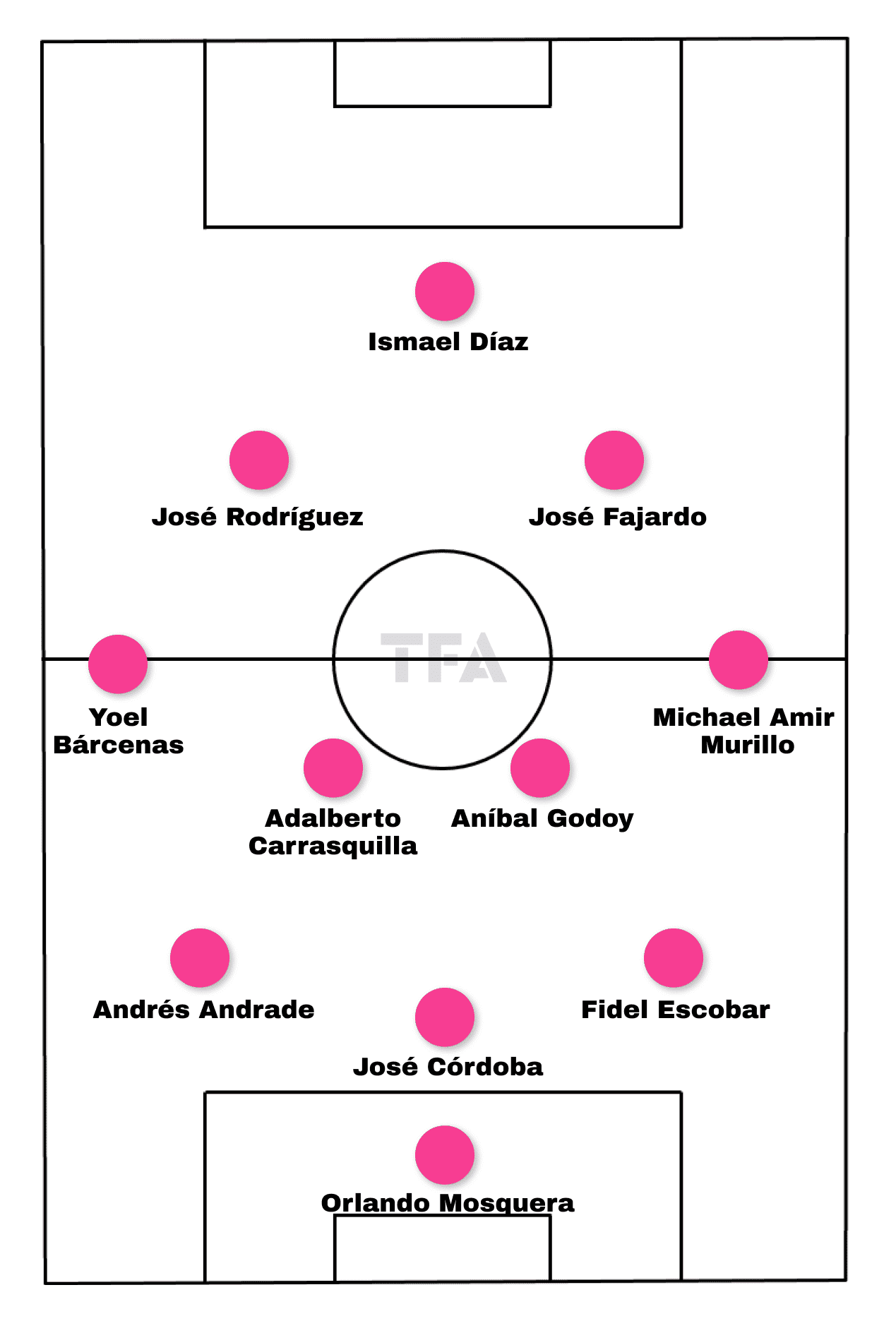
The key thing that stands out about Panama’s game plan is that their style shares many characteristics with traditional Spanish tactics, and the fact that their starting formation utilises wing-backs fits in with that as it affords them greater positional flexibility and provides distinct passing routes for them to transfer the ball through.
Beginning at the back, the three-player defensive line that will look to offer protection for goalkeeper Orlando Mosquera is largely settled and has been for a run of games now, and it seems unlikely that Christiansen will want to tamper with the understanding that has been built up between the trio of Fidel Escobar, José Córdoba and Andrés Andrade and so is likely to start all three together at the Copa América tournament.
The wing-backs, too largely select themselves, with Michael Amir Murillo, who plays for Marseille in Ligue 1, the clear first-choice on the right-hand side whenever fit and backed to be a key player for Panama in balancing out the attacking and defensive demands of the role.
On the other side, several players could be given the role, but Yoel Bárcenas looks to be the candidate leading the race to play in that role, despite being a creative midfielder by trade.
Inside them, the partnership of Aníbal Godoy and Adalberto Carrasquilla (both of whom currently ply their trade in the MLS) sees Panama blend age and experience and a range of tactical qualities, with the former the team captain and someone who has been in the international game for 14 years and the latter someone who is younger and perhaps more expressive with the ball at his feet, making him a key cog in the machine when it comes to implementing Christiansen’s possession-orientated game plan.
Panama can again select several options for the forward line, but the combination that seems to be most favoured is the one shown here.
José Fajardo and José Rodríguez play the inside forward roles behind Ismael Díaz, who seems likely to lead the line.
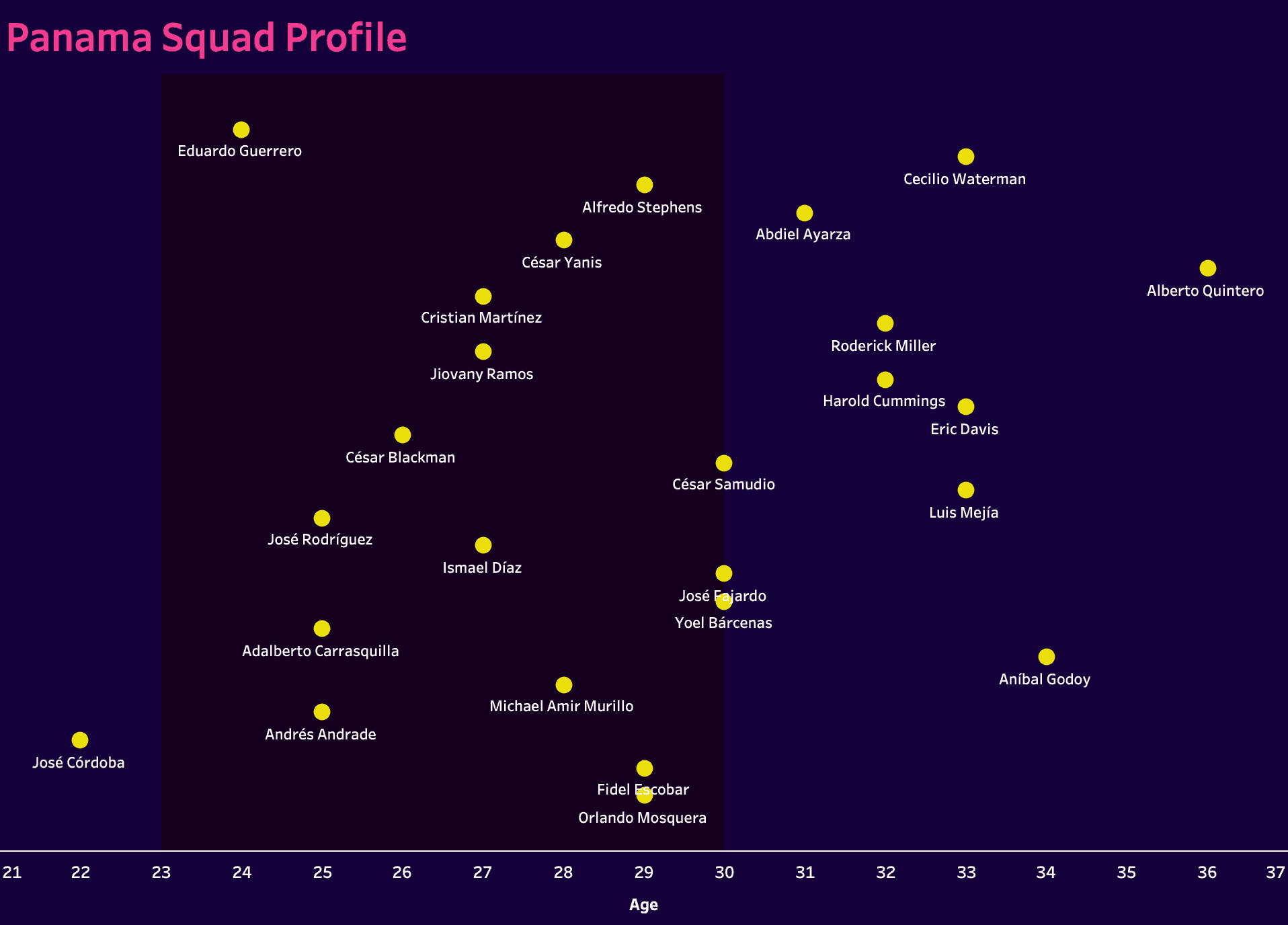
When breaking down Panama’s age split, what is clear to see is that those likely to be included in their final tournament squad are all either in the middle of their careers or are nearing the end and that perhaps reflects how Christiansen’s style relies on squad continuity and so wants players who have experience and who have been in squads before.
It also reflects how he values experience, with many of those that could feature as substitutes or alternatives if the starting lineup is changed being over the age of 30.
That perhaps shows that Christiansen knows how tight tournaments can be and that second chances are not available, so having players who are used to a major tournament environment will aid them in either securing a positive result or in getting back into those games that see them devoid of ideas.
Attacking Phase
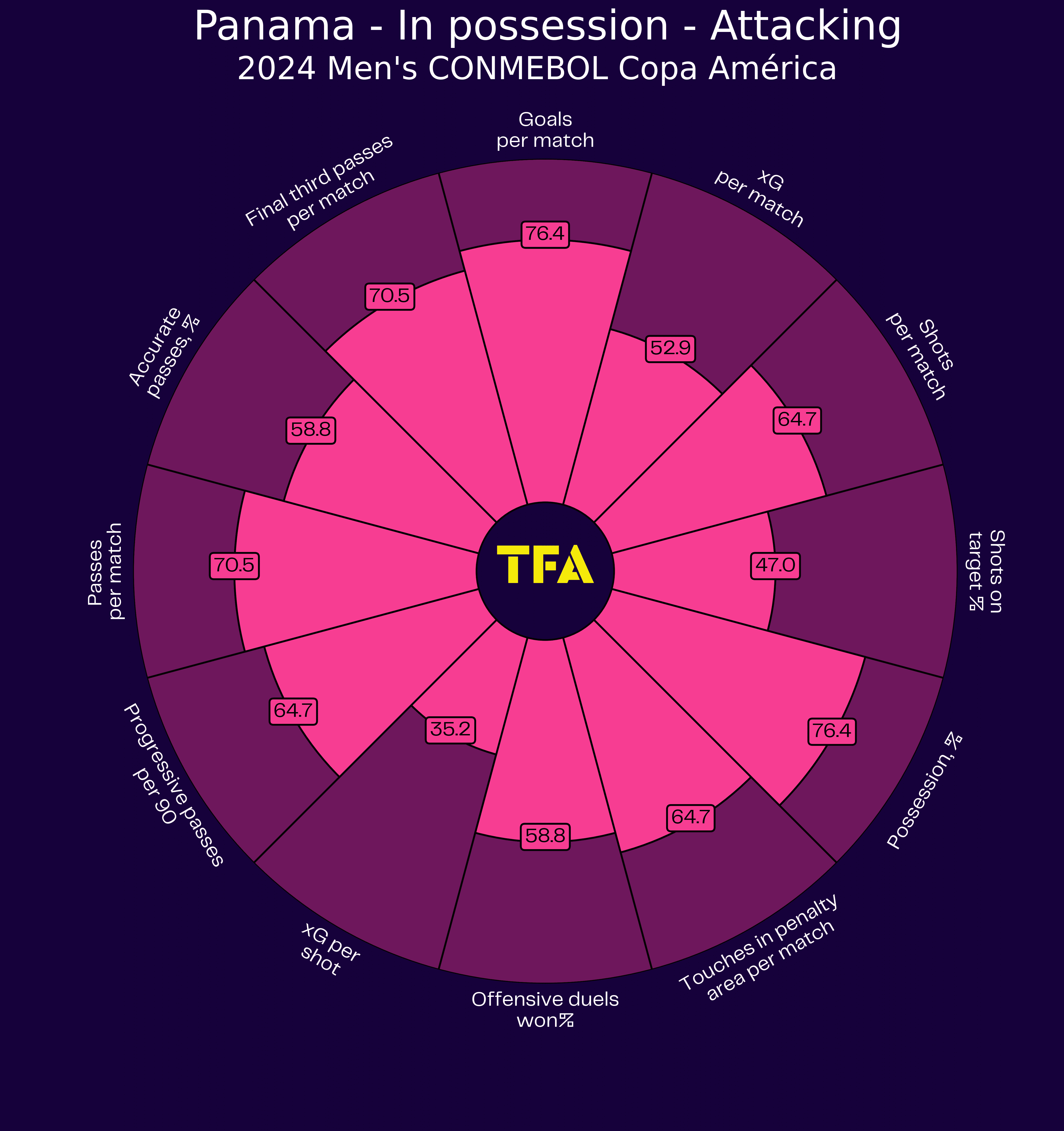
It has been mentioned on plenty of occasions in this scout report that Panama’s desire is to play in a style akin to traditional Spanish principles, with them quick passing sequences a prominent part of their game plan.
Their attacking statistics in this graphic indicate just how much their play revolves around them, with them making a high number of passes per game in percentile terms and ranking among the upper levels when compared to others in the tournament for average possession per game.
Therefore, they are a team that is difficult to win the ball from whenever they get into their rhythm, which is one reason they will be a formidable opponent to face.
It is also worth noting that they don’t only rank highly for those statistics that concern their movement of the ball.
They also compare well to other teams when it comes to shots taken per match (even if there aren’t many that are on target) and goals scored per game.
Therefore, they will not only look to keep the ball but will then use it in positive ways, and they can be backed to test opposing defensive lines on a regular basis.
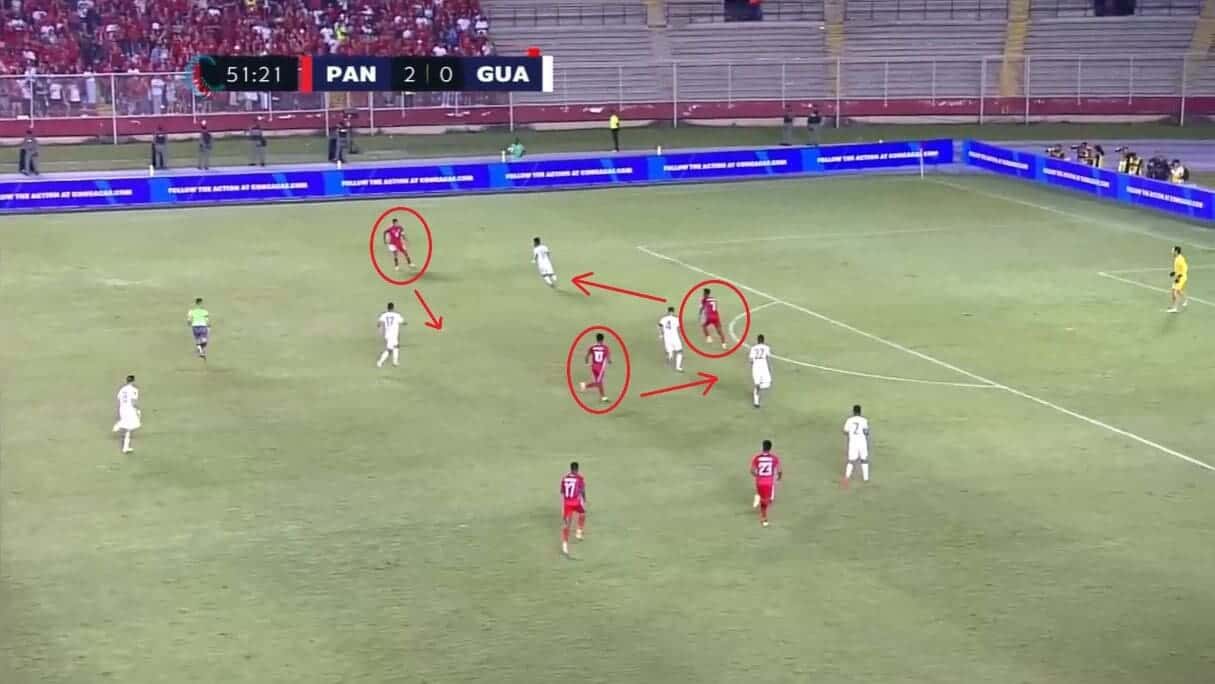
To add more flesh to those bones, Panama averaged 61.42% possession across their two matches in 2024 and 54.33% per game throughout last year.
It comes down to the collective effort of the whole team in many ways, with this way of playing only working if everyone is on the same page and knows where they need to be at each stage of the game.
This is something that Christiansen has really looked to drum into his squad as his time at the helm has gone on, and situations like this indicate that the players are buying into this and are working hard to ensure that they do get results by working in unison.
In this case, the ball has been switched across the field towards Eric Davis by Escobar, and the former knows that staying mobile is vital if Panama are to stay in control of the situation.
As a result, he instantly looks to drift infield with the ball at his feet in order to create space and to have a better chance of fashioning a shot on goal.
This in itself doesn’t demonstrate the unity that is present in Panama’s play, though, with that coming through Rodríguez realising what Davis’ intention is here and making the opposite movement as a result, with him moving out towards the wings to replace the wing-back and to give him greater freedom to get inside the field.
At the same time, because Rodríguez moves backwards here, Bárcenas runs forward to ensure that Panama keep their shape vertically as well as horizontally, and the seamlessness with which this all takes place shows how Christiansen’s side work together to keep their opponents guessing, just as Guatemala were here.
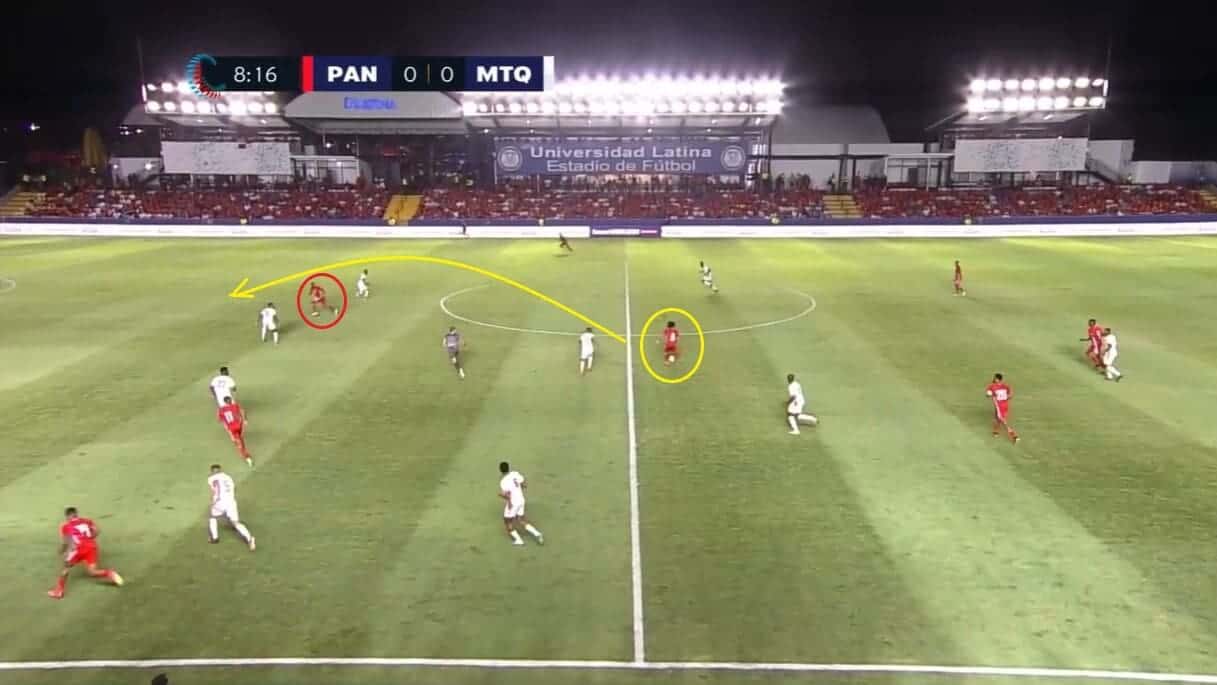
This is not to say, though, that everything about Panama’s attacking play relies on movement and patience, with there also being an element of adaptability whenever they are faced with different situations.
In this case, Martinique have set up with a high backline.
So, there is no need to keep the ball in the same area of the pitch for longer than is needed.
Instead, Carrasquilla has sent the ball forward with an aerial manner to give Fajardo a chance to exploit the vast amount of territory that is available behind it.
The fact that this led to a goal and gave Panama the perfect start to the game showed that a lot of what they do well is simply about reading different situations and then finding the right way to deal with them, and the fact that they used this aerial attacking strategy against Guatemala too (though without profiting from it) highlights how they have numerous ways of creating chances and so will operate at Copa América with a large degree of unpredictability.
Defensive Phase
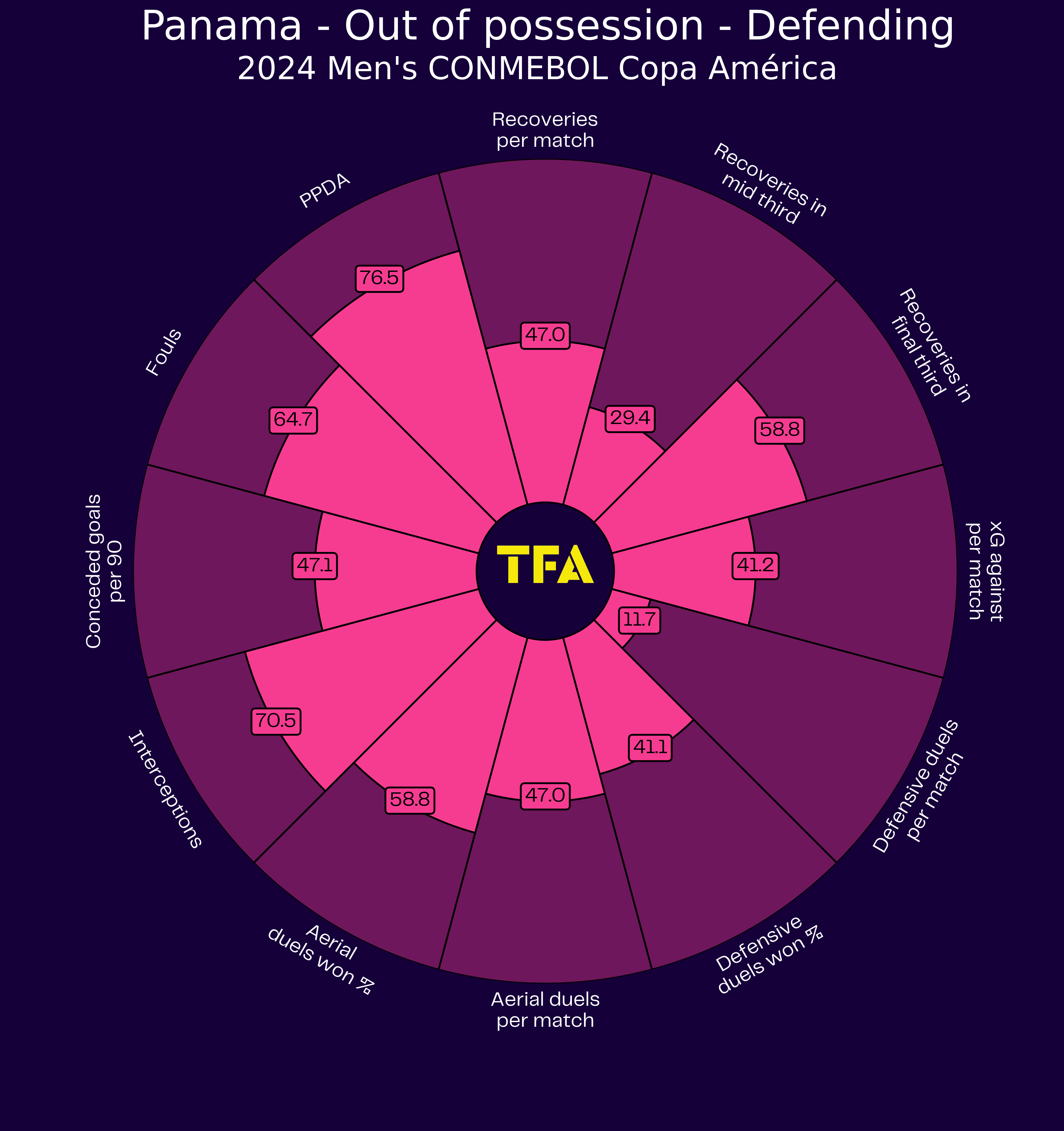
Panama’s defensive play is where they have tended to become more vulnerable and easier to break down, with them showing their susceptibility to opposing threats and falling away as a number of matches have gone on.
This is largely because they don’t like to compete in many defensive duels and sit just below the median mark in percentile terms for the number of aerial contests that they take part in, which shows how, despite making a high number of interceptions, they don’t have a great desire to win the ball at the earliest available opportunity and are instead happy for it to enter an area further back where they feel that they will have a chance of regaining it.
This may also lead to them ranking below the median for goals conceded per game.
It would not be a surprise to see a number of teams create plenty of chances against them as the tournament goes on but do not necessarily convert them, with Panama appearing largely secure whenever the ball does enter their own third.
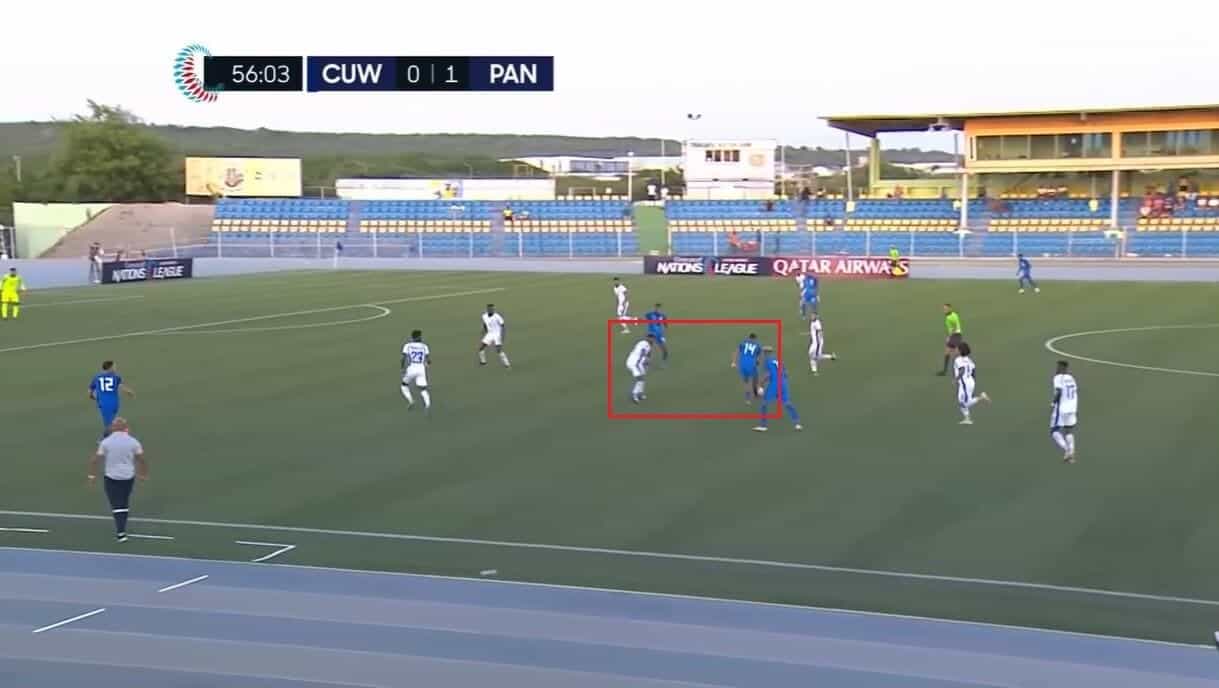
This method of defending is shown clearly here, with Curaçao taking the ball up the field and Escobar making no effort to close it down, instead leaving space between himself and the ball.
By doing so, he allows Kenji Gorré to find striker Rangelo Janga with a pass, and the logic behind this defensive tactic does appear confusing, given that Curaçao have some highly creative players in their team, such as Gorré and Birmingham City’s Juninho Bacuna.
However, when looking at the number of average goals that they have conceded, it does appear that Panama know what they are doing, with them letting in two goals per game in 2024 so far but only seeing 0.88 be conceded per game last year.
Therefore, unorthodox or not, it works for them on the whole, and so it is highly likely that they will look to defend in the same way during their Copa América campaign once it gets underway.
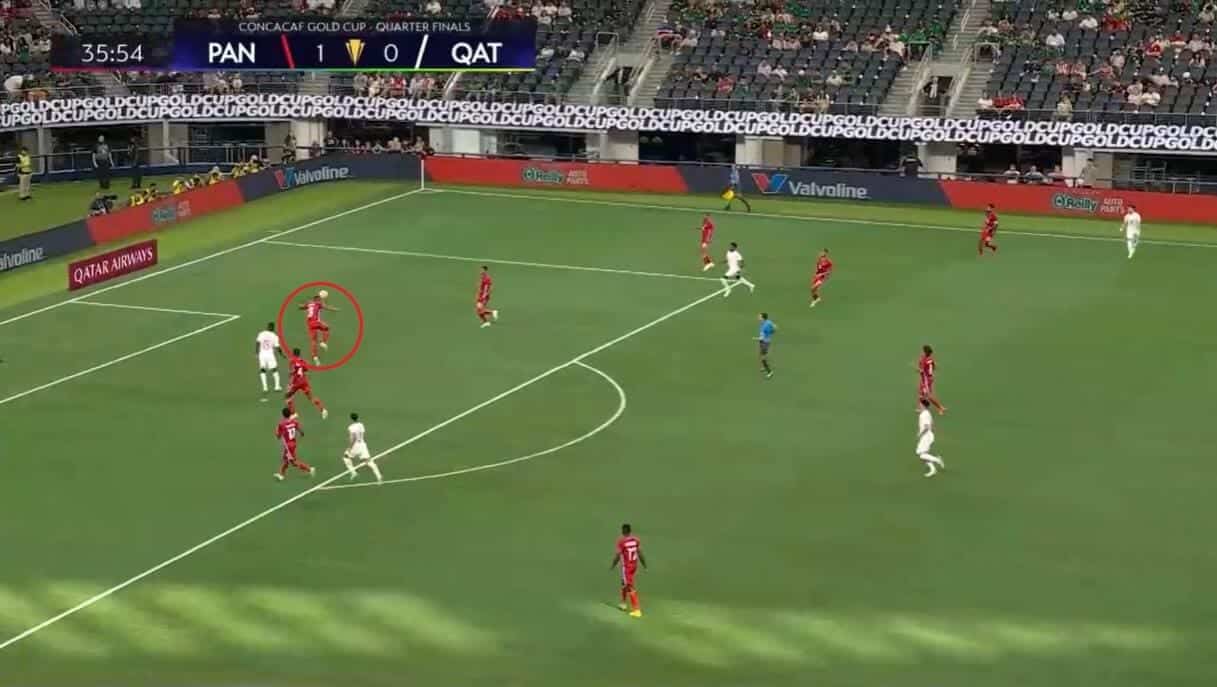
They have such a promising record inside their own third because of the quality of their back three.
They constantly remain firm and work as a unit whenever opponents look to breach their goal area.
It also doesn’t matter who is deployed in their rearguard, with every player who features in it knowing what is required and working hard to ensure that Panama are as tough to score against as possible.
In this case, Harold Cummings is the one recognising the threat and breaking up the attack, and his intervention here prevents Qatar’s Almoez Ali from having a shot on goal in an area that he would find it tough to miss from.
Transitions
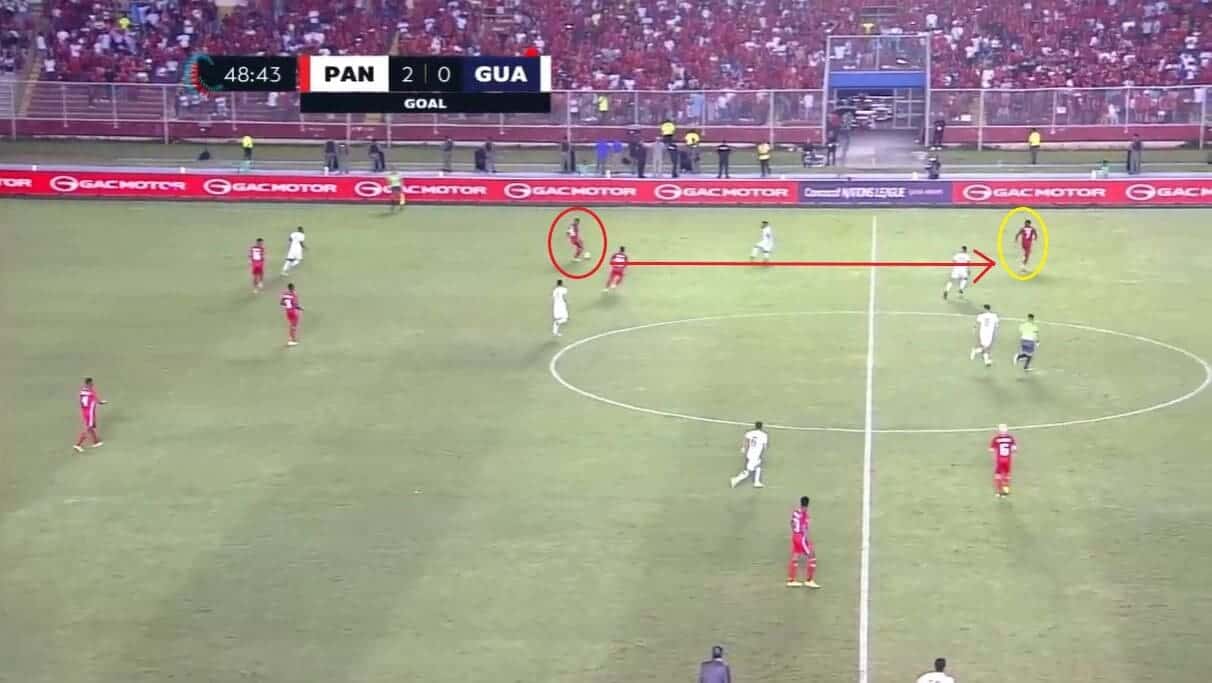
Whilst it has already been mentioned that Panama like to make quick passes whenever they are in transition, this is not the only way that they look to progress the ball up the field.
Instead, there is also a reliance on direct passes that still stay on the ground but see the ball transferred around even quicker, giving Panama a greater chance of exploiting any gaps in their opposing lines.
In this case, Davis is looking to do just that as he seeks out Rodríguez on the same wing and sends the ball directly towards him rather than looking for someone between the two who can bridge the gap.
Panama registered a passing accuracy of 84.7% this year, just down from 85.6% last time out.
Thus, it is clear once again that they are the dominant side when they get into their flow.
The way that they caught Guatemala off guard here shows that this is one of the main reasons that they will be an interesting team to watch as the Copa América action goes on.
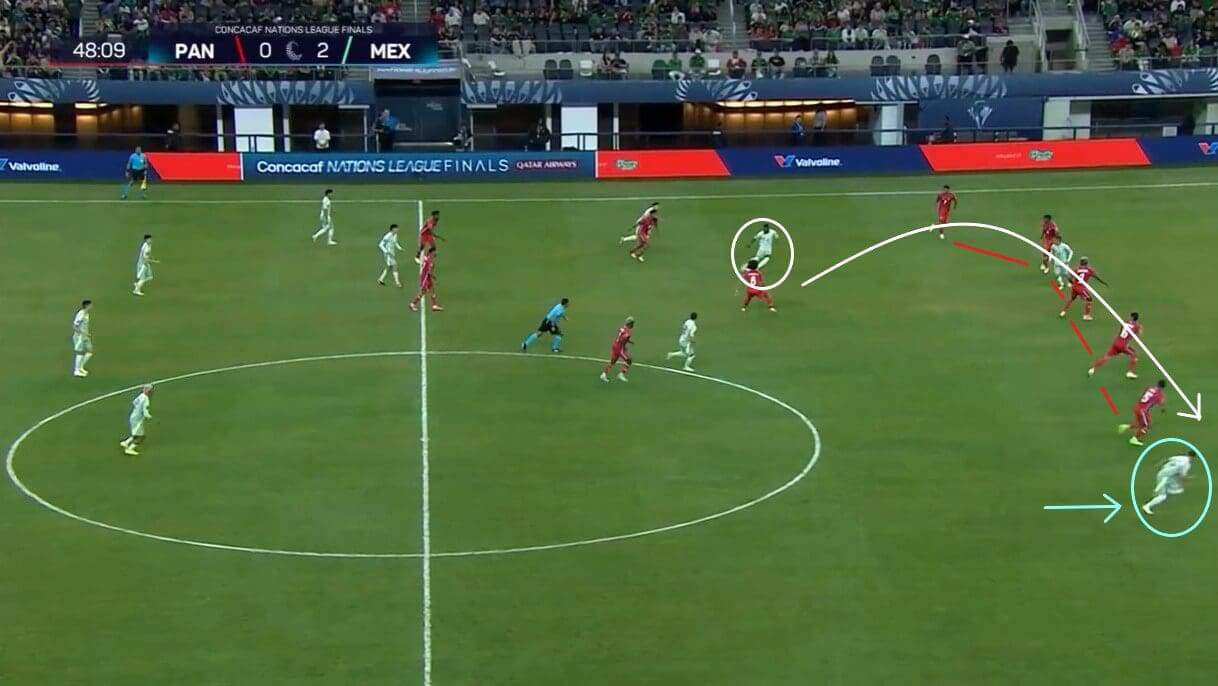
Panama will need to keep a close eye on how they deal with the opposite transitions.
Their tendency to play with a high backline at times sees them leave too much space open behind them, inviting opponents to send balls into those areas and testing their resolve.
Normally, this is not too common, and they do manage to cut out most attacking chances, but this was one occasion when they didn’t, and Mexico were able to expose the problems that playing this way can bring.
In this situation, Julián Quiñones has received the ball between the lines and has instantly recognised that Uriel Antuna is making a run behind the defensive line to give him an option to counterattack at pace.
It might not have led to anything this time.
Still, it was a warning sign of the issues that might arise for Panama if they persist with setting up this way whenever they don’t have the ball.
The fact that they have only won 39.8% of their aerial duels in 2024 (and succeeded in just 49.3% of them last year) highlights that this could lead to their defensive resolve being tested to its limit.
Forwards
The fact that Panama favour a formation that sees three forwards start on the field together means that they will not have many alternatives available to select from when looking at those likely to be on the bench.
In fact, when looking at the list of who could be in the USA representing Panama this summer, only Cecilio Waterman and Eduardo Guerrero are clear attacking options, and so it does appear that they could be left a little short if they do incur an injury or if there is a tactical issue that they come across.
However, there are other ways around this, and what is also clear about Panama’s potential squad options is that there are players in other areas of the field who can operate in those forward roles.
For example, Bárcenas has the creativity and speed of thought needed to link those in the opposing third together, as does Alfredo Stephens, whilst Alberto Quintero is a winger by trade but could play in the forward positions if needed.
This ability to rotate players around and to play them in less familiar positions is not something that Panama object to, with Díaz not a striker necessarily but a winger, and so it could well be that Christiansen experiments a little as the games go on if he feels that there is a need to tweak his side’s setup in order to gain results.
Midfielders
With Panama having such a good balance in their potential starting midfield combination, there isn’t really a great need for them to have too many different tactical traits among those that could come on to replace them.
As a result, most have the same profile as one or both of Godoy and Carrasquilla.
So there will be a sense of continuity whenever alterations are made during and between games, rather than it being a case of players with vastly different skill sets being introduced.
What should be pointed out, though, is that this does not extend towards the wider roles, with some of those likely to be involved in the wider squad being wide attackers and so looking to operate on the wings if there is a chance for them to do so.
Due to Panama using a wing-back formation, having players who fit this profile might seem unnecessary, but what Christiansen is seeking to do by having them available is to ensure that they can swap with his first-choice wing-backs and can introduce a more attack-minded presence and someone who might stay higher up the pitch more rather than tracking back in the way that those who are natural defenders do.
This is particularly the case on the right wing, where Murillo is usually a right back and Quintero a right winger.
Alternating them will give Panama different qualities, both with and without the ball.
Defenders
That is not to say that Quintero is the only alternative to Murillo, though.
Cesar Blackman is another option in that position and someone who is much more like the latter player in that he is a defender first and foremost but who has the pace to get up the field when the team is in transition.
Therefore, there is variety there, and Panama can always make the right choice depending on the situation at hand.
On the left-hand side, the inclusion of Davis is something that needs to be highlighted, with him being one of Panama’s most underrated players and someone who can have an impact in any area of the field.
It would not be a surprise to see him feature quite a lot as the tournament goes on and to allow Bárcenas even greater freedom to influence the game in different areas of the field, and that might be one tactical feature of Panama’s play that does occur whenever they do need to mix things around.
Where there doesn’t seem to be any great need for rotation is in the back three, with those included in the wider squad only likely to come in if there is a need for them to, such as when the team are really struggling to keep teams at bay or if there is an injury as the competition goes on.
That is not to say that they aren’t good players, though.
The aforementioned Cummings really stands out.
He is someone who is likely to offer a lot of experience if included in the squad, which might help the team off the field as well as on it.
He could be a key name for them to have around if they are to go further than they did in 2016 and reach the knockout rounds.
Key Player
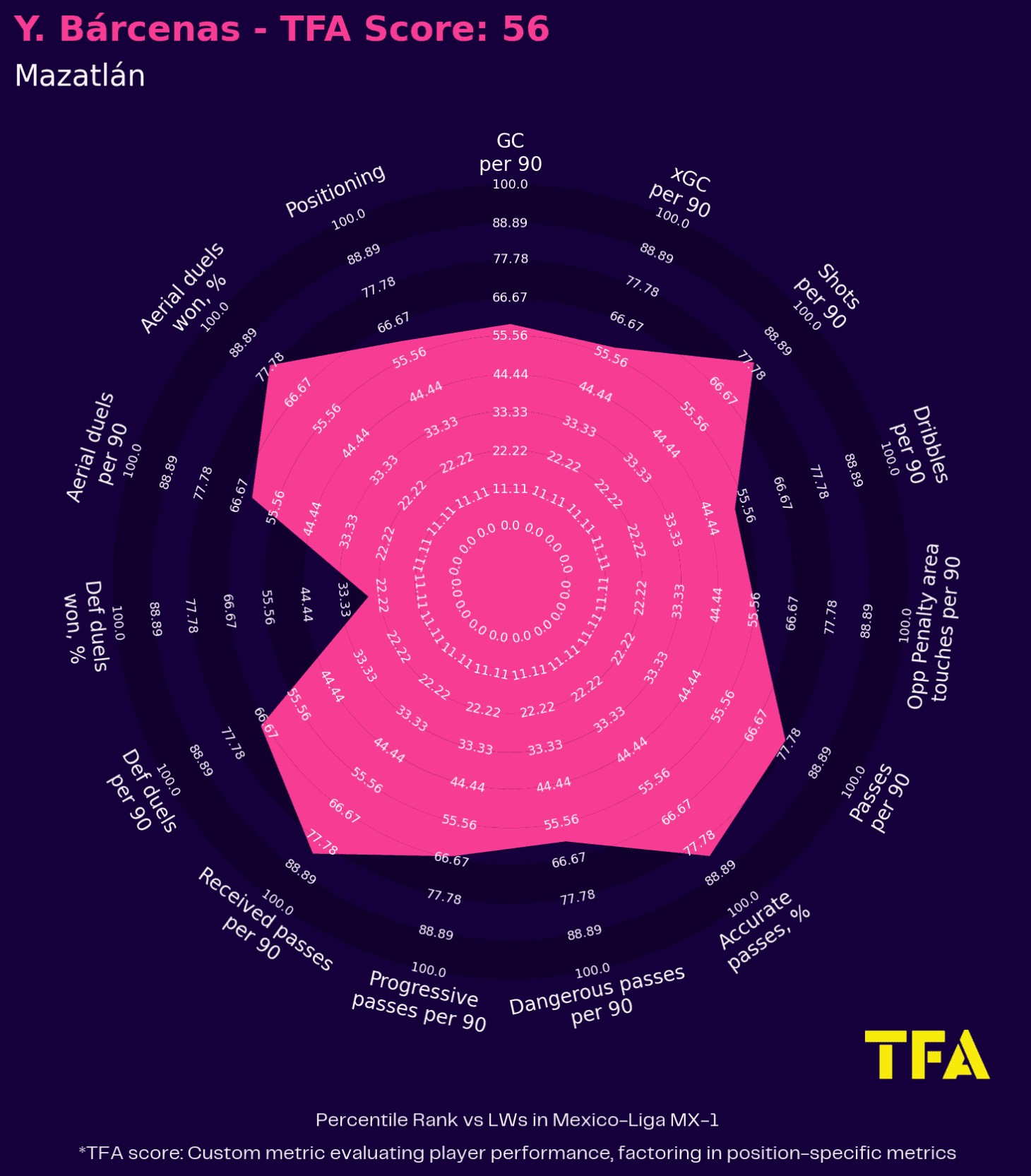
There are many of Panama’s players who will contribute to their performances and who will play a crucial part in their fortunes, with the analysis already highlighting how unity is a huge thing for them, but the one that will glue the whole team together is Bárcenas.
As the scout report has already highlighted, he is likely to start at left wing-back but can be backed to play in interior spaces, too, and it will be common to see him get on the ball in a number of different sections of the pitch as the games go on.
This graphic indicates the importance that he will have, with him ranking highly in percentile terms for passes made per game and his passing accuracy whilst playing for Liga MX side Mazatlán last season, and those statistics reflect how he will look to connect the dots for the team whenever he can.
At the same time, he also had a high number of shots per game in percentile terms, so he is not a player who only creates chances but who will also look to get on the scoreboard himself if the opportunity arises for him to do so.
He could perhaps not offer too much to Panama’s play in defensive duels, with it clear that he competes in an above-average number per game but that he sits very low down in percentile terms for those he wins.
However, this is one of the reasons that Panama are likely to have players available who can fill in if that becomes an issue, such as the aforementioned Davis, who is better-suited to offering a presence whenever the team are out of possession if it becomes that other teams look to exploit that hole in Panama’s setup.
Tournament Prediction
Given that this is only Panama’s second taste of the Copa América tournament (as with most of the CONCACAF teams taking part) and they are far from being the strongest side in either their own continent on in the global game, it would be unfair to expect too much of them, especially when considering the opposition that they will be facing in the USA.
This is not to say that they will fail to get a win, with them no doubt targeting the meeting with Bolivia as one in which they could gain a victory, and it would certainly be within their capabilities to do so.
However, because it seems unlikely that they will defeat either Uruguay or the USA (though they could run the latter close, having narrowly lost to them a number of times in recent tournament history), a third-place finish in the group and another exit at that stage of the tournament does seem like a reasonable prediction to make.

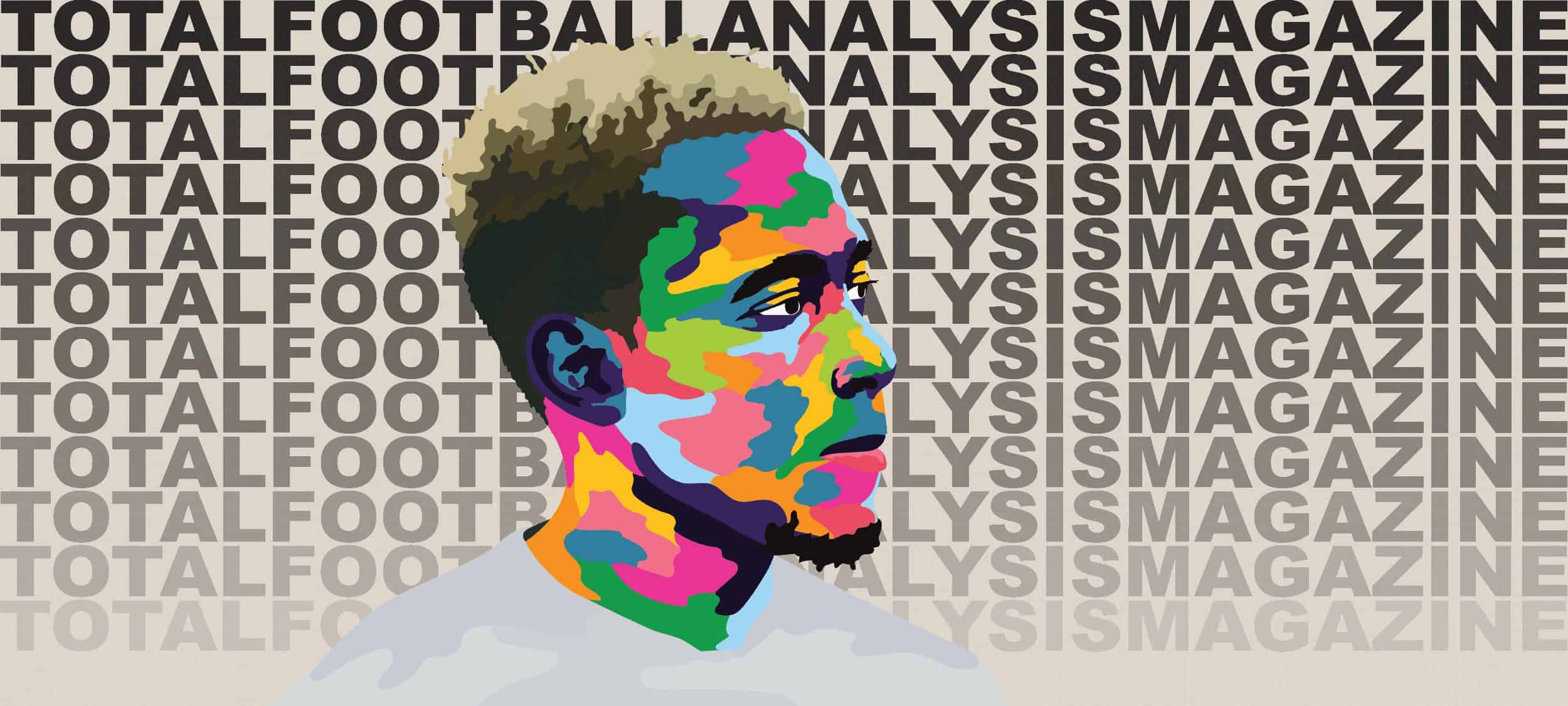



Comments